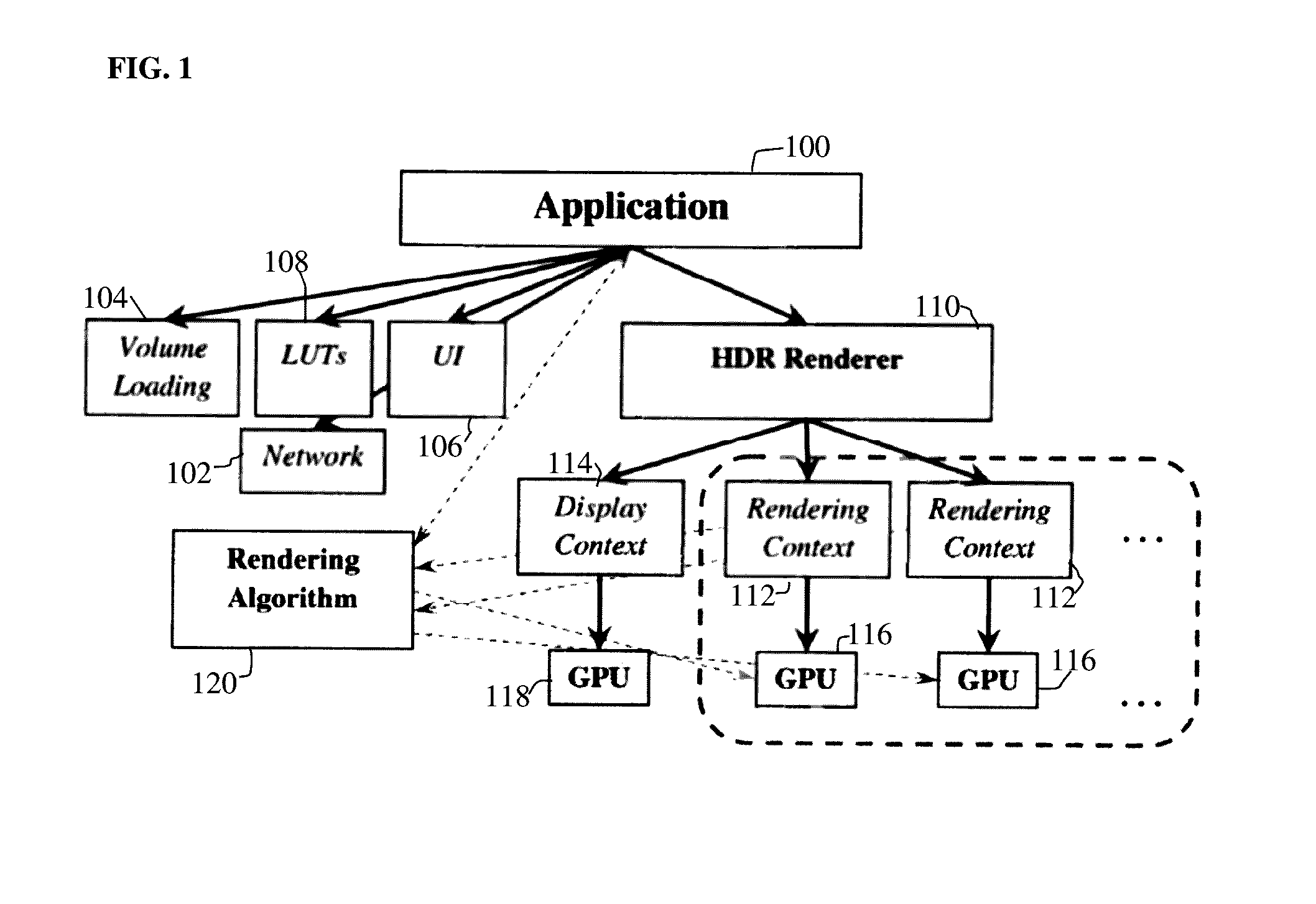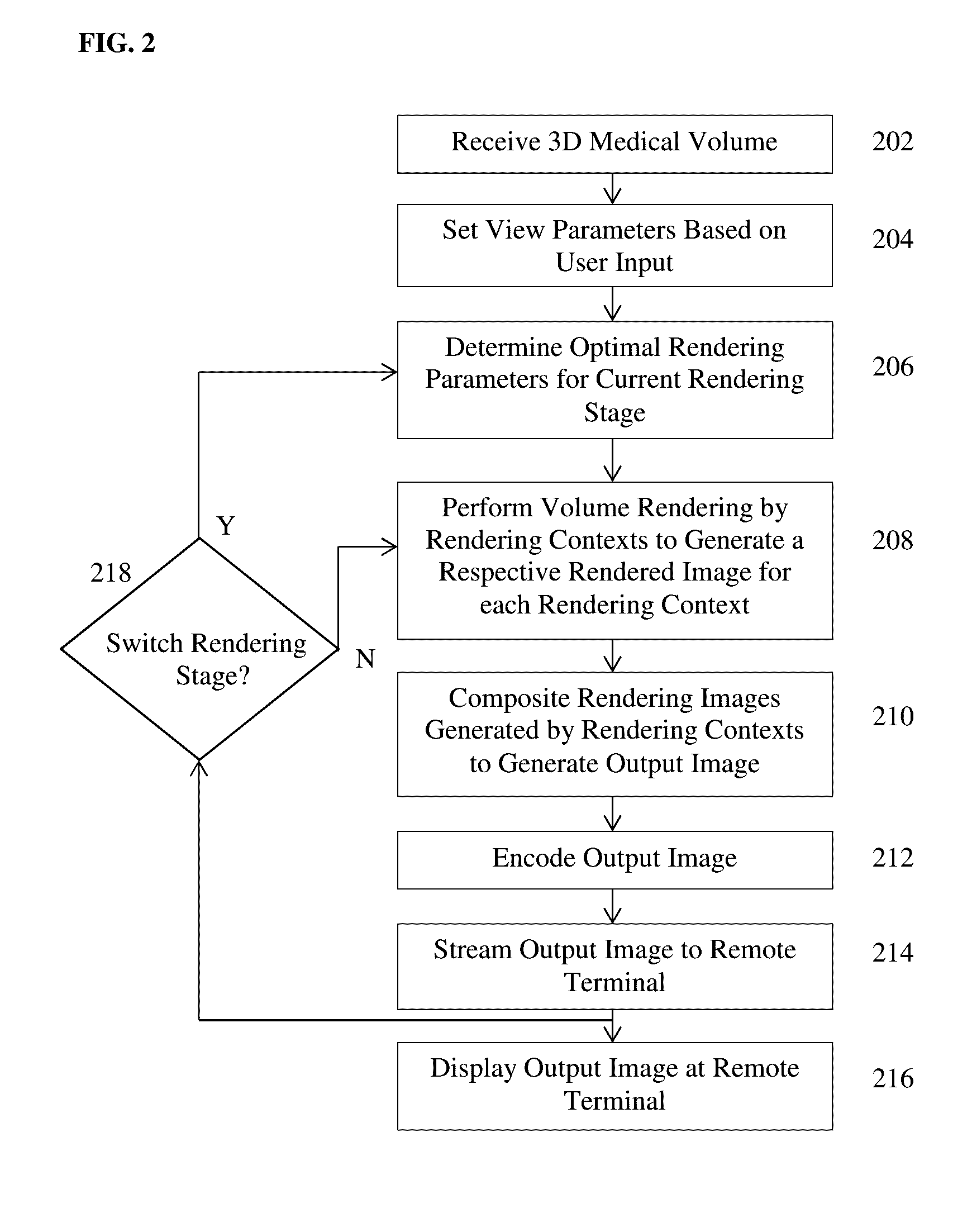Method for Streaming-Optimized Medical raytracing
a volumetric data and streaming technology, applied in the field of streaming-optimized progressive distributed volume rendering of medical volumetric data, can solve the problems of user experience very distracting image noise, high computational cost, and high computational cost, and achieve the effect of minimal visual artifacts
- Summary
- Abstract
- Description
- Claims
- Application Information
AI Technical Summary
Benefits of technology
Problems solved by technology
Method used
Image
Examples
Embodiment Construction
[0015]The present invention relates to a method and system for streaming-optimized volume rendering of medical volumetric data. Embodiments of the present invention are described herein to give a visual understanding of the volume rendering method. A digital image is often composed of digital representations of one or more objects (or shapes). The digital representation of an object is often described herein in terms of identifying and manipulating the objects. Such manipulations are virtual manipulations accomplished in the memory or other circuitry / hardware of a computer system. Accordingly, is to be understood that embodiments of the present invention may be performed within a computer system using data stored within the computer system.
[0016]Volume rendering refers to generating and displaying 2D projection images of a 3D volumetric data set. Embodiments of the present invention provide a method and system for progressive distributed ray tracing volume rendering with minimal art...
PUM
 Login to View More
Login to View More Abstract
Description
Claims
Application Information
 Login to View More
Login to View More - R&D
- Intellectual Property
- Life Sciences
- Materials
- Tech Scout
- Unparalleled Data Quality
- Higher Quality Content
- 60% Fewer Hallucinations
Browse by: Latest US Patents, China's latest patents, Technical Efficacy Thesaurus, Application Domain, Technology Topic, Popular Technical Reports.
© 2025 PatSnap. All rights reserved.Legal|Privacy policy|Modern Slavery Act Transparency Statement|Sitemap|About US| Contact US: help@patsnap.com



